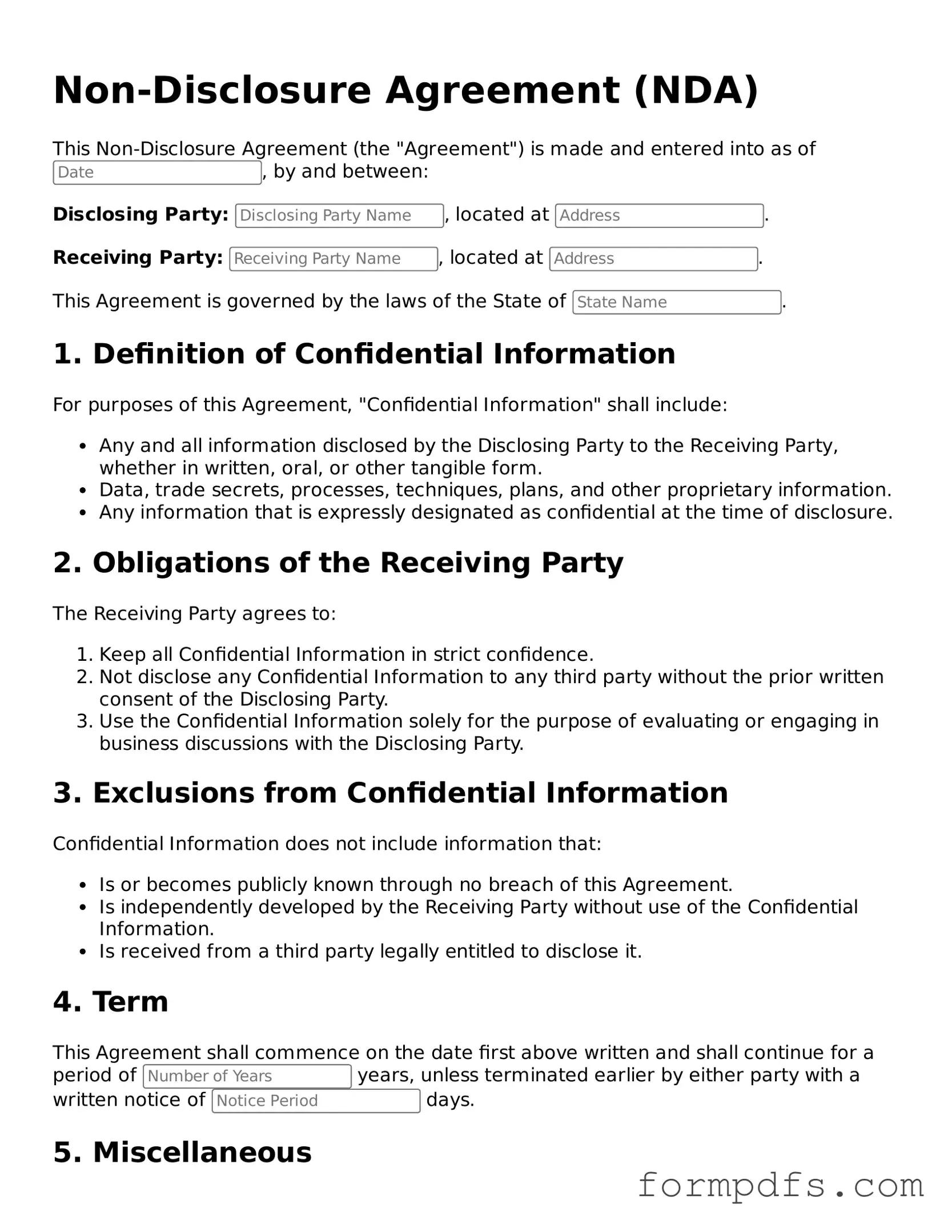What is a Non-disclosure Agreement (NDA)?
A Non-disclosure Agreement (NDA) is a legally binding contract that protects confidential information shared between parties. It ensures that sensitive information remains private and is not disclosed to unauthorized individuals or organizations.
Why do I need an NDA?
If you're sharing sensitive information, such as business plans, trade secrets, or proprietary data, an NDA helps safeguard that information. It provides peace of mind that your ideas and strategies will not be misused or disclosed without your permission.
Who should sign an NDA?
Anyone who will have access to confidential information should sign an NDA. This includes employees, contractors, business partners, and even potential investors. It’s essential to protect your information at all levels.
What information is typically covered by an NDA?
NDAs generally cover any information that is not publicly available and is intended to be kept confidential. This can include business plans, customer lists, financial data, marketing strategies, and technical specifications.
How long does an NDA last?
The duration of an NDA can vary. Some agreements specify a set time period, while others may last indefinitely until the information becomes public or is no longer considered confidential. It’s important to clarify this when drafting the agreement.
What happens if someone breaches an NDA?
If someone breaches an NDA, the affected party may take legal action. This could involve seeking damages, enforcing the agreement, or pursuing other remedies as outlined in the NDA. It’s crucial to have clear terms regarding breach consequences.
Can an NDA be modified after it is signed?
Yes, an NDA can be modified, but both parties must agree to the changes. It's advisable to document any amendments in writing and have both parties sign the revised agreement to ensure clarity and enforceability.
Is an NDA enforceable in court?
Yes, NDAs are generally enforceable in court as long as they are reasonable and clearly outline the terms of confidentiality. Courts typically uphold agreements that protect legitimate business interests and do not impose unreasonable restrictions.
Do I need a lawyer to create an NDA?
While it’s possible to create a simple NDA without a lawyer, consulting with one is highly recommended. A legal professional can help ensure that the agreement is tailored to your specific needs and compliant with applicable laws.
